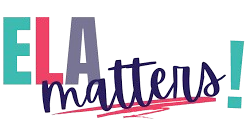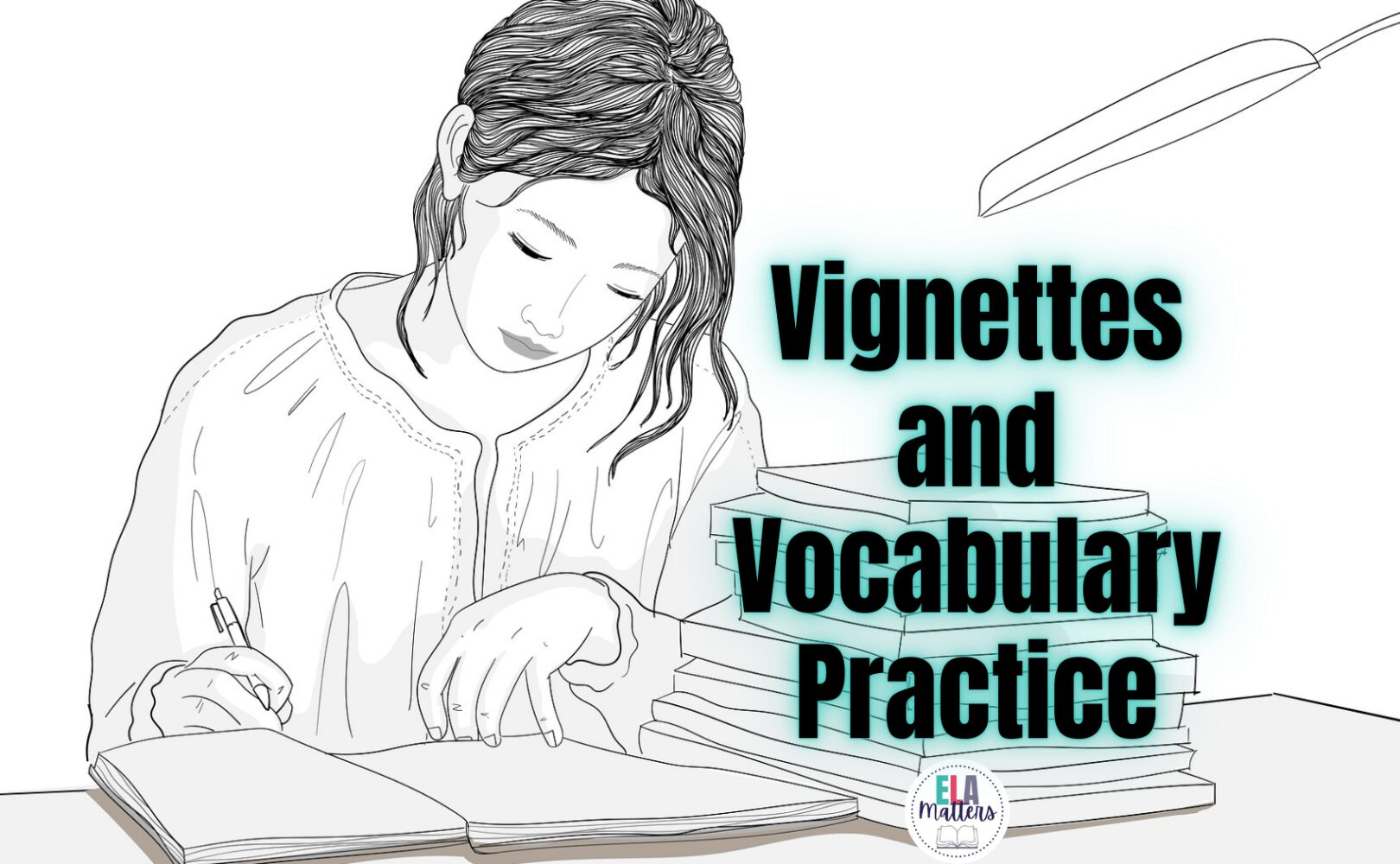I must admit that formal vocabulary hasn’t been a core aspect in the classes I teach. Certainly, I facilitate and encourage students to look up words they don’t know and to maintain their own vocabulary lists. However, I don’t assess or test this vocabulary, nor do I really check in on those lists. More often than not, students are not reading the same text so they are left to their own ‘devices’ for vocabulary. (I love a good lit circle opportunity!)
Now I know and you know that there are definite benefits to explicit vocabulary instruction so while I have revamped courses in recent years I’ve started to include more vocabulary instruction. Plus, having been online a lot and, in an effort to build a bit of a long-distance community, I’ve turned to some whole class reading. To that end it’s been easier to make a more concerted effort to incorporate vocabulary into key units too.
Why Use Vignettes?
This idea is to put vocabulary into a new context. This approach using vignettes for vocabulary provides an excellent chance to incorporate some creative writing, as an off-shoot to an already planned unit!
You may already be familiar with Robert Marzano’s 6-step process to better vocabulary instruction and this idea adapts some of this research, notably in the use of student work to add context to the new vocabulary.
How Does It Work?
Define vignettes
A vignette is a brief episode or moment that is descriptive rather than plot-driven. You might start with using photographs like some of the ones found on Pixabay.com (the photos of a moment/scene with shadows around the outside edge) and then further explain or explore with examples such as Sandra Cisneros’ The House on Mango Street, Robert Fulghum’s All I Really Need to Know I Learned in Kindergarten, Charles Dickens’ Sketches by Boz available in the public domain from The Project Gutenberg for a classic approach, or My First New York, which features stories about some famous people’s first visit/arrival to New York City (more suitable to older students). How do students define vignettes? What’s required? What’s unexpected?
Provide some parameters for the vignette
This can be derived from the study of other vignettes listed above or teacher/class-created.
Is there a particular setting you want students to use?
Is there a guiding image they might use? (If there’s a film adaptation consider using a film still in order to aid their creativity.) With Frankenstein, students write a vignette based on different settings in the volumes of the novel: first Walton’s boat in the middle of nowhere, then near the DeLacey’s cottage, and then the final scene. You could also provide an unrelated image that presents opportunities for description such as a scene from a Where’s Waldo book or make it cross-curricular by including famous paintings or photographs or choosing a news image from a recent noteworthy event. You can also check out photo contests for their entries such as the Smithsonian Magazine’s annual contest.
For the first one, you may find that stronger guidelines work best. Some students want creative freedom but having a scenario can help those who may find themselves with some writer’s block.
Write
Students consult their list of words. This can be a list you supply or what they have tracked in their reading.
Provide time in class for writing. You could provide a strong timing structure: write (20 mins), peer edit (10 mins), and final review (5 mins). The peer review is key for my students since it allows a second set of eyes. It’s another mini-assessment for/by a classmate that might help the writer or the editor with their own work!
Share
There are a variety of ways to share. Right now, a lot of classwork is remaining digital and so using a shared slide deck is an easy option. The teacher shares a set of slides and students add their vignette to a slide.
TEACHER TIP: Have students complete the process within this shared deck so that peer editing becomes easier and it increases accountability. If in Google Slides click the multi-slide view and you can see who is working and who needs a nudge. And for you as the teacher you can provide ongoing feedback without shifting to 30 different individual documents!
Optional: Evaluate
You may choose to collect the vignettes in order to assess knowledge and assign a grade. If this is the case, then providing a bit more time to edit the work might be advisable; my students always appreciate the opportunity to review the work outside of class before submitting for a final review. This is obviously up to your discretion; I mark one out of the three vignettes and only after the completion of all three so students can choose which one they’d like to submit for evaluation.
So if you’re looking for a way to freshen up your vocabulary instruction and perhaps add a side of creative writing, this might be a perfect option for you and your students.

